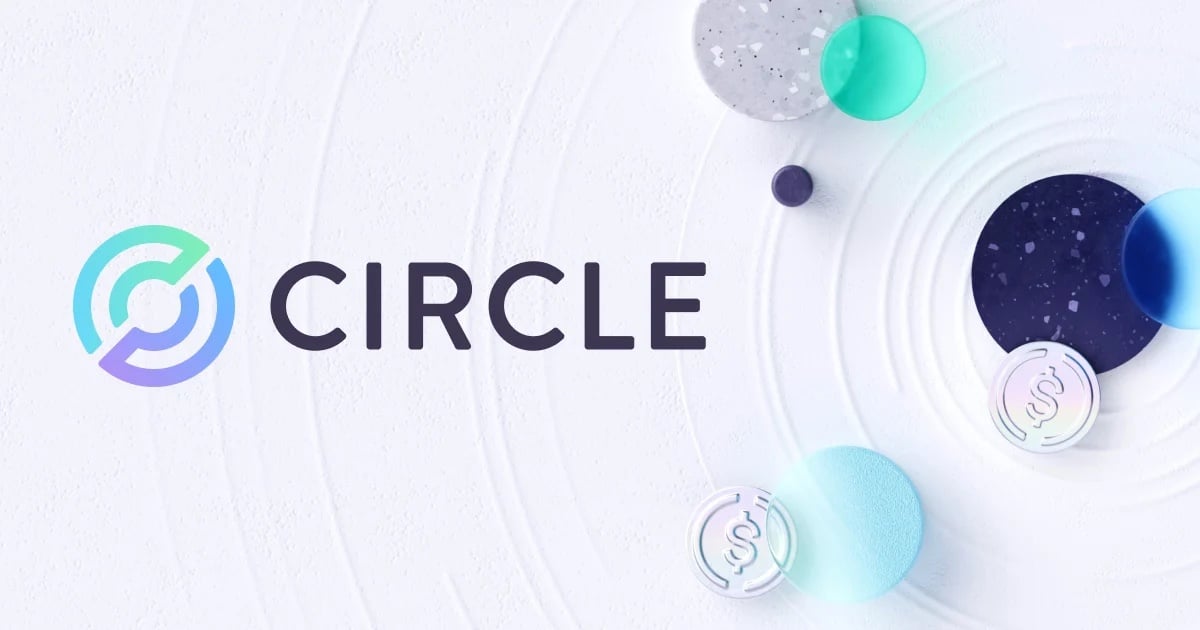Circle Launches Bridging Standard for Stablecoin Deployment on New Networks
Publikováno: 22.11.2023
Source: Circle In a first-ever announcement in the stablecoin ecosystem, Circle, makers of USDC, has released a bridging standard for its digital token. Making the announcement in a November 21 blog post, the fiat-backed stablecoin maker pointed out the need to help developers bootstrap stablecoin liquidity in new networks. The initiative is driven by the […]
The post Circle Launches Bridging Standard for Stablecoin Deployment on New Networks appeared first on Cryptonews.

In a first-ever announcement in the stablecoin ecosystem, Circle, makers of USDC, has released a bridging standard for its digital token.
Making the announcement in a November 21 blog post, the fiat-backed stablecoin maker pointed out the need to help developers bootstrap stablecoin liquidity in new networks.
The initiative is driven by the challenges posed by the rapid expansion of layer-1, layer-2, and layer-3 blockchain protocols, making native stablecoin issuance impractical. This makes it impossible for Circle to make new USDC deployments.
Introducing Bridged USDC Standard, a new way to expand access to $USDC & reduce fragmentation.
EVM blockchain & rollup teams can now deploy a bridged USDC token contract with optionality for Circle to seamlessly upgrade to native issuance in the future.https://t.co/suSgllMQoQ
— Circle (@circle) November 21, 2023
To address this issue, a new set of guidelines was introduced to enable the use of bridged USDC on new Ethereum Virtual Machine (EVM) compatible protocols.
This new bridged form of USDC will offer the option of being seamlessly upgraded to its native counterpart in the future.
Providing more details, the second largest fintech stablecoin company revealed that all bridged USDC will be fixed under the “unofficial” category and will not be issued or be eligible for redemption through its major platform.
Instead, they would serve as a proxy to the regular USDC stablecoin that will make it tenable for them to be used on any platform where bridging of the tokenized dollar asset is possible.
To offer bridged USDC on any new blockchain protocol, developers must go through two key processes.
In the first phase, the third-party developer will leverage the guidelines outlined in the standard to deploy their bridged USDC token smart contract. Following this, the bridged USDC can then be used to add stablecoin liquidity to the new network.
In the event the bridged USDC has been able to attract significant supply and increase its number of holders and app integrations, the Circle and third-party developer team will then elect to securely transfer ownership of the asset to the Circle Consortium.
Once the bridged USDC is duly handed to Circle, the value is then burnt or permanently retired, and a native one is launched in its place while retaining its existing supply, holders, and app integrations.
1/ It’s official. #ItsStillStableSeptember and $USDC is now available natively on @0xPolygon PoS mainnet!
Learn the benefits of native USDC and how to switch from bridged USDC.e
https://t.co/KcK55sT4KHpic.twitter.com/Gm6HjR62KW
— Circle (@circle) October 10, 2023
Circle’s recent initiatives follow the earlier deployment of its stablecoin on the popular layer-2 blockchain protocol, Polygon, in October.
1/ It’s here. #StableSeptember. The day you’ve all been waiting for – what comes first? How about two launches on the same day?
Introducing $USDC on @optimismFND and USDC on @BuildOnBase, two leading L2 scaling solutions for Ethereum built on the OP Stack. pic.twitter.com/v3SgJBZ7qG
— Circle (@circle) September 5, 2023
Additionally, it replicated the same strategy on the Coinbase-backed Base Network in September.
Liquidity Fragmentation No More
Blockchain protocols are quickly becoming household names. However, the distributed ledger systems are largely siloed, making it difficult for liquidity and real-world information to be directly transferred from one protocol to the other.
For most liquidity provision protocols, such as Circle, the standard procedure involves creating a protocol-compliant stablecoin to meet the token demand on specific platforms.
This has led the stablecoin issuer to launch its product only on 15 blockchain networks despite massive demand for the 1:1 dollar-pegged crypto asset.
Circle revealed that its newly released bridged USDC standard will be a game-changer in the stablecoin liquidity ecosystem as it would directly eliminate the need for “migration.”
This term refers to the process where stablecoin holders are often required to exchange unofficial assets for their native counterparts once available.
With the new standard, users won’t need to take any steps to exchange their bridged assets for native ones, as the process will be handled internally.
This addresses concerns about liquidity fragmentation, a significant issue in the decentralized finance (DeFi) ecosystem. Now, investors can access liquidity effortlessly without worrying about potential issues arising in the future.
Meanwhile, Circle has recommended all developers use a bridge system that comes with upgrade functionality from the onset.
The post Circle Launches Bridging Standard for Stablecoin Deployment on New Networks appeared first on Cryptonews.